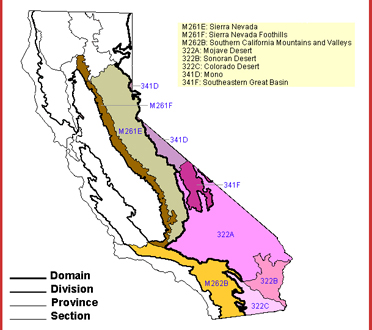Contrasts between the Mojave and Colorado deserts
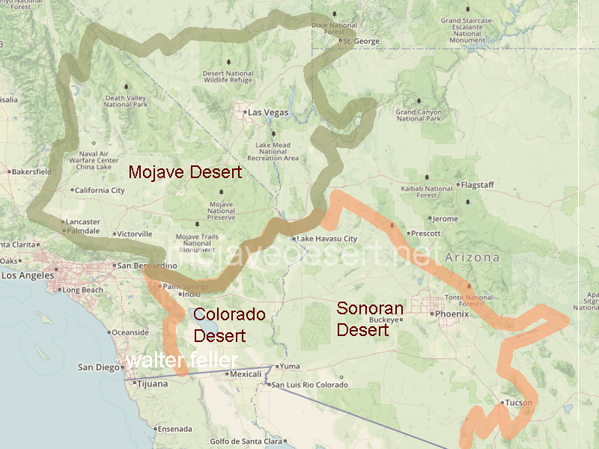
The California Desert province is divided into the Mojave and Colorado Deserts, a division based on climate, elevation, and latitude. The Mojave receives less summer rainfall and endures longer periods of freezing temperatures in the winter than the Colorado Desert with its more southern location, lower elevation, and exposure to a summer monsoon rainfall pattern. Precipitation also increases with elevation so that greater plant diversity and abundance can be found in the desert mountains. In addition to the influence of topography, variations occur north to south and east to west across the landscape.
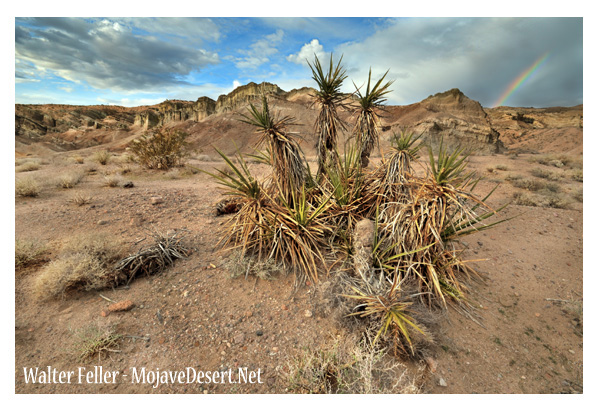
Mojave yucca after rainfall in Owl Canyon, Barstow, CA.
The Mojave Desert supports an estimated 2500 plant taxa, with over 200 of them endemic to California (Keeler-Wolf, 2007). The Colorado Desert is roughly half as rich in species. Some distinctive plants of the Colorado Desert that are not found elsewhere in California—and thus considered indicator species—include ocotillo (Fouquieria splendens), ironwood (Olneya tesota), desert lavender (Hyptis emoryi), desert agave (Agave deserti), chuparosa (Justicia californica), and California fan palm (Washingtonia filifera) (Baldwin, 2002). Joshua tree (Yucca brevifolia) and Mojave yucca (Yucca schidigera) are considered indicator species for the Mojave Desert, as are burro bush (Ambrosia dumosa) and teddy-bear cholla (Opuntia bigelovii).
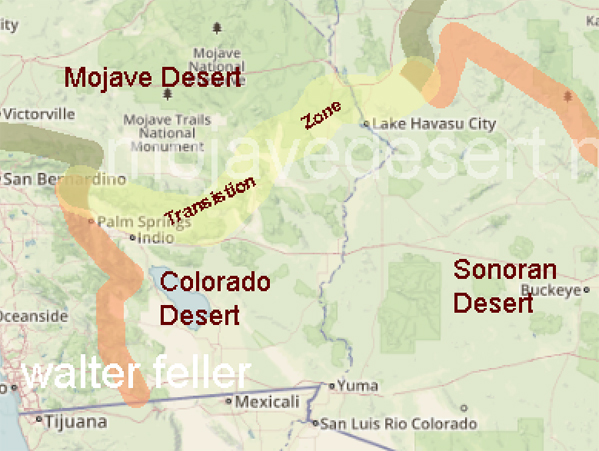
The transition zone between the Colorado and Mojave deserts occurs approximately between Banning to the west and Needles to the east (Barbour et al., 1991 ). South of this imaginary line, plants distinctive to the Colorado Desert become more prevalent. However, many species cross this imaginary line, making the transition zone a subtle blending rather than a sharp contrast.
Previous - Next
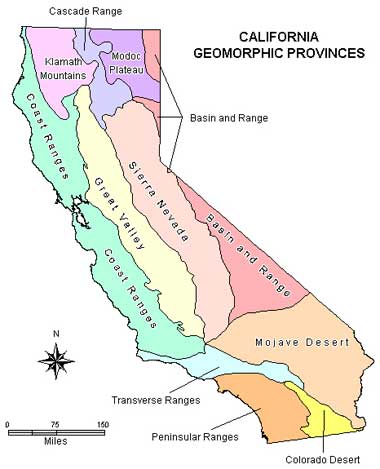
Geomorphic Provinces
